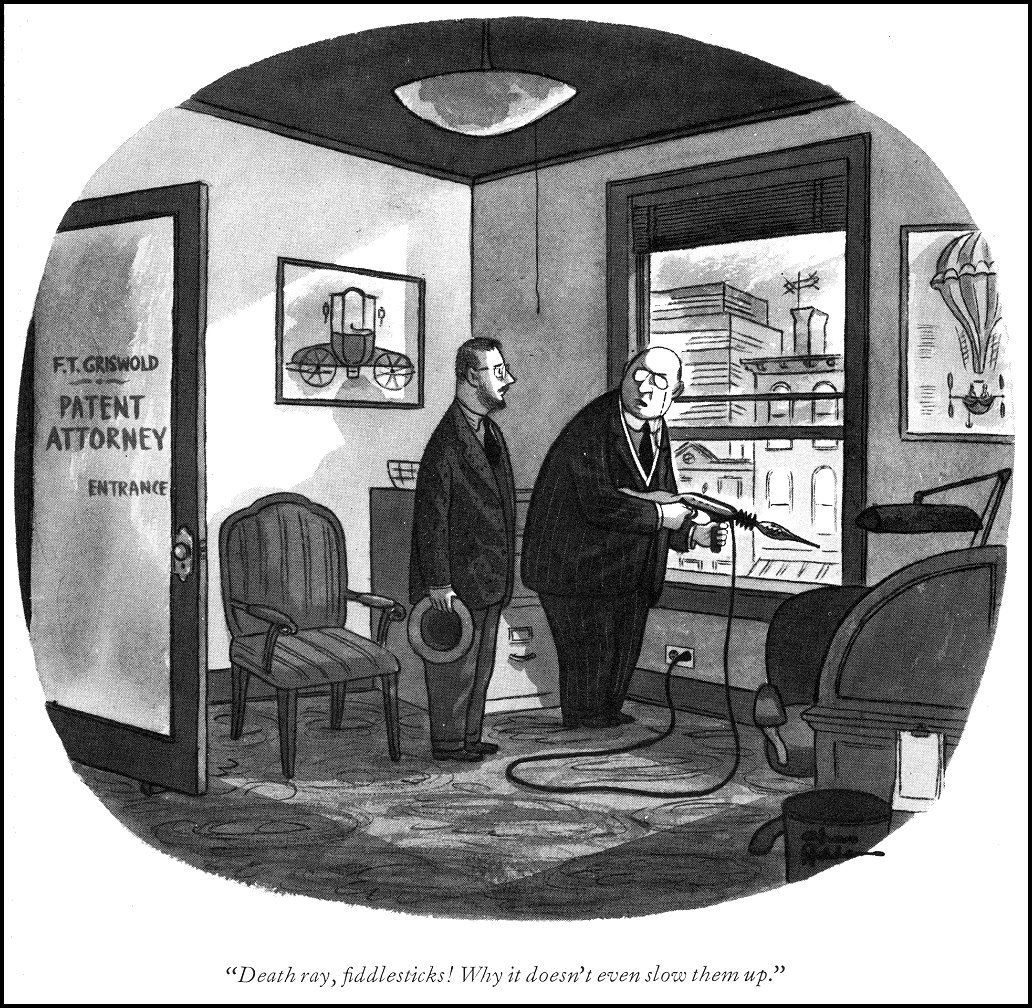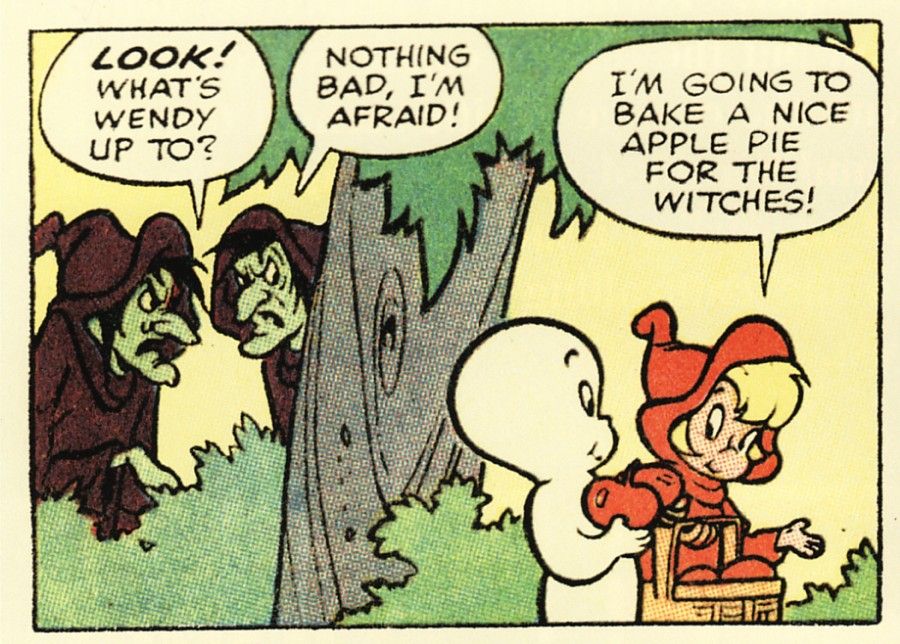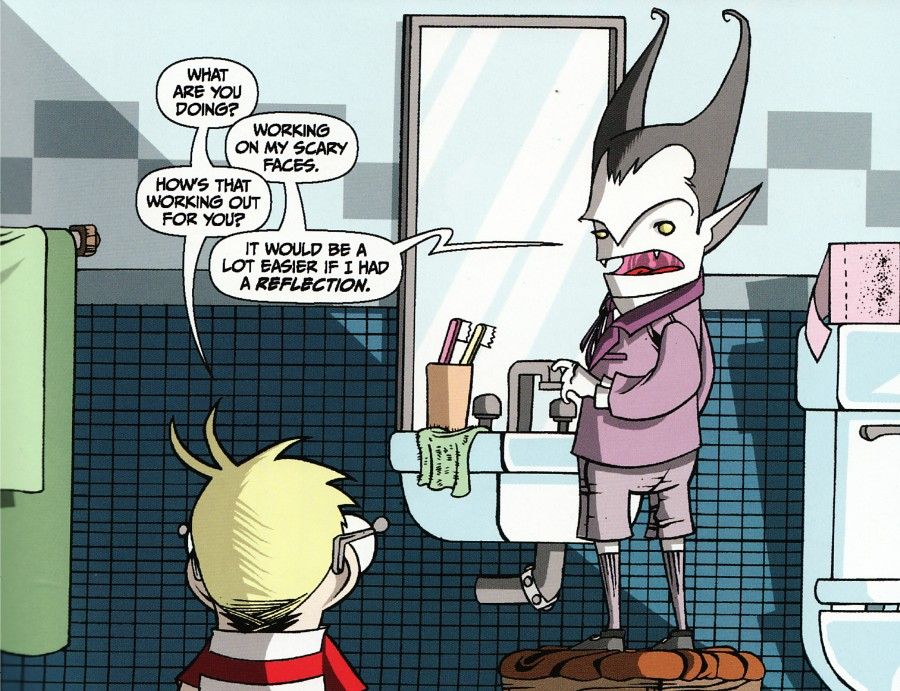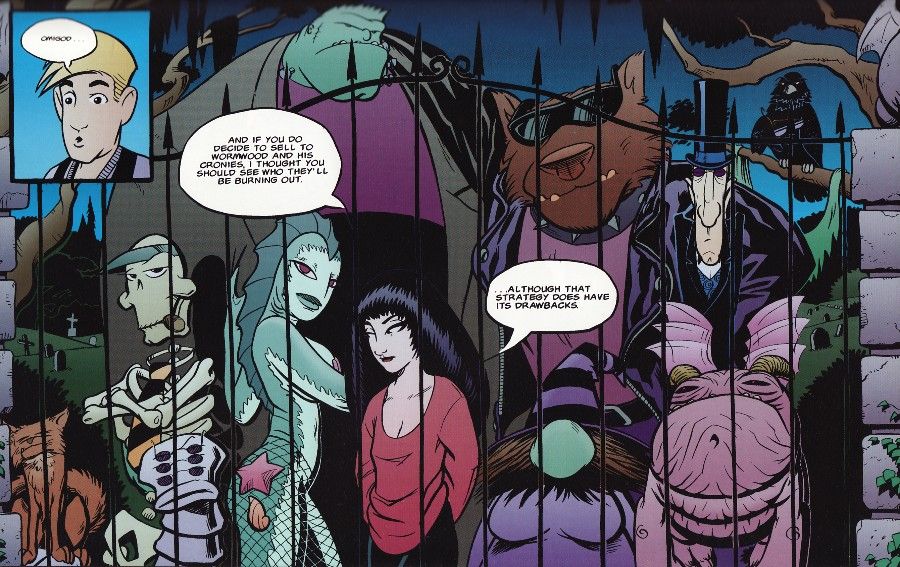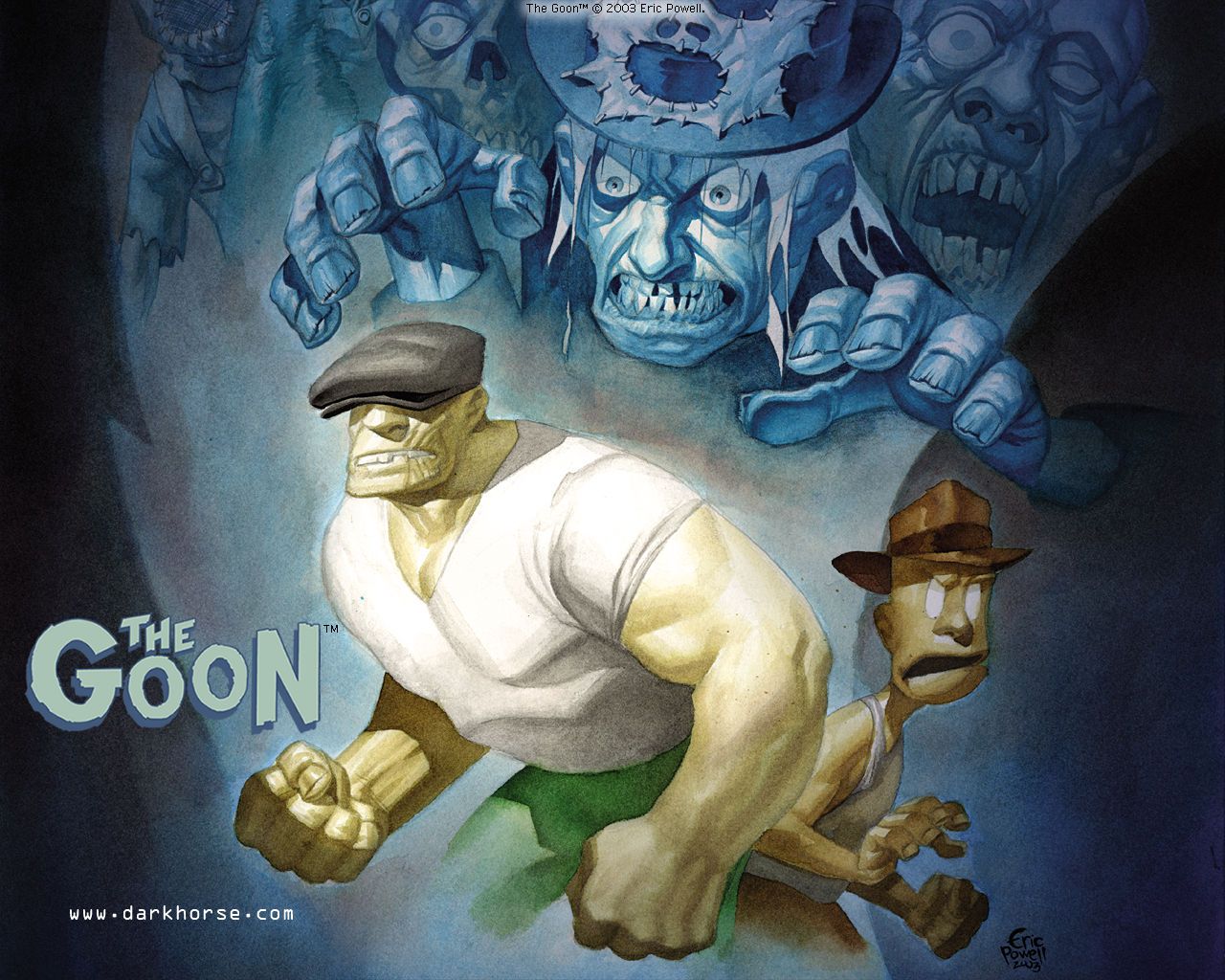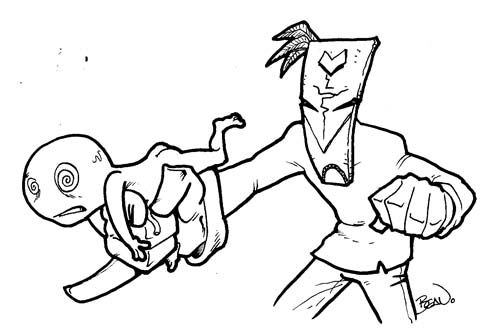Most of the nurses, hospice workers, police officers, and firefighters I know have a funny outlook on death. Funny because it's strange and different than the usual nervousness and fear, but also funny because... well, because they giggle about it. Potentially faced with death every single day, they have to find a way to keep it from driving them insane with despair. And that way is usually laughter.
We all do it. One of the things that makes Horror such a powerful genre is that it forces us to face mortality and other things that usually make us uncomfortable. We squirm our way through the experience and emerge - we feel - stronger and better prepared for having endured it. It's a coping mechanism. But we also laugh. There's a reason that another word for "blood" is "humor."
I recently wrote a comic about a vampire cow (you'll be hearing more about that some other time), so I've been thinking about funny horror comics a bit. What are some of the ways that we try to merge the things that frighten us with the things that make us laugh? Here are six examples; my favorites of the Humorous Horror sub-genre.
Charles Addams' hilariously macabre strips may not have been the first time humor and horror were married, but they're arguably the most successful example of it. The Addams Family cartoons being the most famous, obviously. Addams avoided depicting truly evil characters and events, choosing instead to poke fun at death (or just plain misery) and our fear of it. His characters celebrate misfortune and mortality, but they do it without meanness of spirit. Rather than laughing at our pain, they invite us to join them in the joke. Once we do - and with Addams, we always do - we realize that there is something funny about these oh-so-powerful fears we have, even if we can't figure out exactly what that is.
If we're going to argue about Charles Addams' being the most successful example of the humor-horror blend, Casper is the only real contender. It's a very different kind of humor from Addams, though. In fact, there's practically no horror to be found in it at all. The humor comes from Casper's rejection of horror and the disgust that instills in the "serious" spooks he encounters. According to Jerry Beck (in his intro to Dark Horse's collection of Casper stories), Harvey editor Sid Jacobson liked to remind people that Casper isn't the ghost of a dead boy. Rather, "a ghost is purely a fantasy being, like a giant, a witch, a pixie or a goblin." Harvey Comics created an Enchanted Forest full of these harmless Halloween characters like Casper, his tough cousin Spooky, Wendy the good little witch, and Nightmare the ghost-horse. And generations of kids read those comics and dreamed about going there.
Steve Niles and Ben Roman's mini-series about a group of monster kids is Casper with an edge. The wish-fulfillment is there, but there's a nostalgic angle to it that Casper doesn't have. The Cryptics don't live in an Enchanted Forest, they live in the suburbs and spend their time doing what most kids do: playing outside, teasing each other, and arguing with their parents about not wanting to eat their dog biscuits (or maybe that last one is just Wolfy). Roman's art is creepy and sarcastic, so there's a dark edge to the humor too that's different from Casper. But the scripts are all Niles having fun juxtaposing traditional horror characters with the life of a child. The result is a completely charming look at a group of kids who - while monstrous misfits - are lovably familiar.
Richard Moore takes a similar approach to The Cryptics by populating Boneyard with relateable, humorous monsters. But while The Cryptics is a Casper-like collection of short stories and gag strips, Moore's telling a longer, serialized story. The human hero is a young man named Michael who inherits a cemetery in a small town. When he goes to look it over, he learns that it's inhabited by a cute vampire and her ghoulish friends, and that the townsfolk want it torn down. They see the new owner as their opportunity to do that, but when Michael meets the boneyard's citizens, he's not so sure he wants to cooperate. The humor is mostly in the characters' personalities and the situation, but there's also a fair bit of drama as well. It's a lovely, too-often-overlooked book.
Most of the comics listed so far are more about the humor with some spooky elements thrown in for extra fun. The Goon is different because it allows actual horror to stand side-by-side with the jokes. It's sort of like Charles Addams that way, except that Eric Powell is more willing to allow real evil to creep into the stories. Most of the funny comes from the irreverent attitude that the Goon and his pal Frankie have about the monsters around them, or from the occasional ineptness of those monsters, but Powell never lets you get too comfortable. You may be laughing at this page, but chances are good that you'll be chilled by the next. It's a delicate balance, but Powell is its master.
Doug Paszkiewicz' anthology isn't concerned about balance. It marries humor and horror in much the same way that Addams did, but it's far more mean about it. It's no less funny, but you'll be horrified by your laughter as much as anything you read on the page. Arsenic Lullaby finds humor in Stillborn Sally baby dolls and Voodoo Joe's army of zombie fetuses (raised from the dumpsters behind the abortion clinic). It's vile and nasty and you are evil to laugh at it. But so am I.

